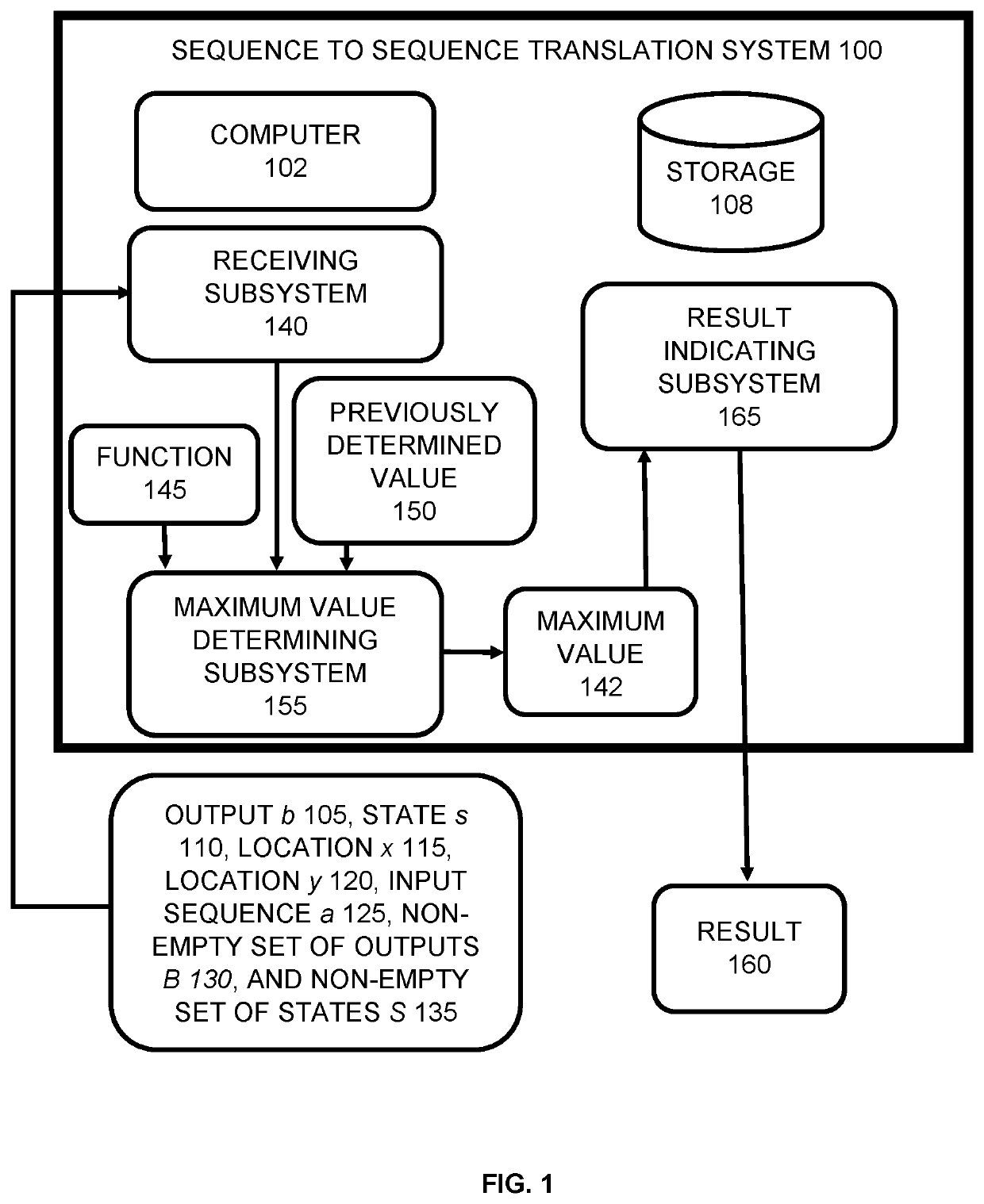Method and system for facilitating sequence-to-sequence translation
a sequence and sequence technology, applied in the field of sequence-to-sequence translation, can solve the problems of difficulty in translating sequences, inability to preserve sequence order in one language in the other language, and inability to match the number of symbols in the first sequence, so as to eliminate the expense of manual programming, reduce translation costs, and improve gdtw accuracy
- Summary
- Abstract
- Description
- Claims
- Application Information
AI Technical Summary
Benefits of technology
Problems solved by technology
Method used
Image
Examples
Embodiment Construction
[0026]FIG. 1 shows an example seq2seq translation system 100 in accordance with an embodiment of the subject matter. Seq2seq translation system 100 is an example of a system implemented as a computer program on one or more computers in one or more locations (shown collectively as computer 102), with one or more storage devices (shown collectively as storage 108), in which the systems, components, and techniques described below can be implemented.
[0027]During operation, seq2seq translation system 100 receives an output b 105, state s 110, location x 115, location y 120, input sequence a 125, non-empty set of outputs B 130, and non-empty set of states S 135 with receiving subsystem 140. The output b 105 can be one or more categorical variable values (values that can be organized into non-numerical categories), one or more continuous variable values (values for which arithmetic operations are applicable), or one or more ordinal variable values (values which have a natural order, such a...
PUM
 Login to View More
Login to View More Abstract
Description
Claims
Application Information
 Login to View More
Login to View More - R&D
- Intellectual Property
- Life Sciences
- Materials
- Tech Scout
- Unparalleled Data Quality
- Higher Quality Content
- 60% Fewer Hallucinations
Browse by: Latest US Patents, China's latest patents, Technical Efficacy Thesaurus, Application Domain, Technology Topic, Popular Technical Reports.
© 2025 PatSnap. All rights reserved.Legal|Privacy policy|Modern Slavery Act Transparency Statement|Sitemap|About US| Contact US: help@patsnap.com

